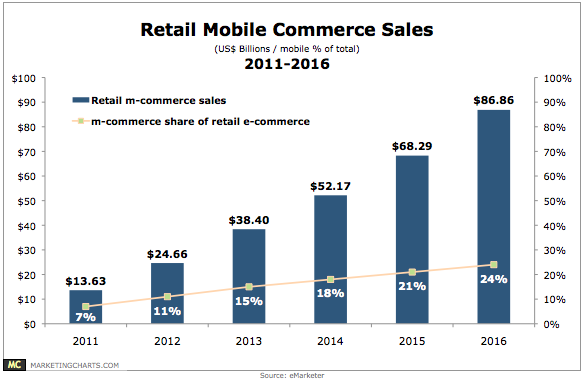 Ecommerce businesses are seated with numerous challenges and opportunities with the evolving web. Competition from established retailers as well as brand new start-ups can make for a dizzying array of challenges for eCommerce businesses.
Ecommerce businesses are seated with numerous challenges and opportunities with the evolving web. Competition from established retailers as well as brand new start-ups can make for a dizzying array of challenges for eCommerce businesses.
More than any other business, eCommerce organizations must place a premium on their web presence. But many eCommerce websites make the mistake of pouring all their time and energy into the look and feel of their website, while wholly neglecting the full customer experience and channel engagement of their website and brand.

5 tips for eCommerce websites
- Website design that supports engagement - Your website doesn't need to be pretty, it needs to engage. Engagement is key. Ecommerce design is about driving prospects into transactions with little or no frustration, while building trust, enjoyment and comfort with a brand. Ensure that customers can browse, share and understand your products. The design of the product gallery should be easy to navigate and intuitive for the most part. Study drop off rates for all pages within the site to ensure that the website navigation is clear and that users have both the ability to browse and navigate to specific interests. The web design process needs to focus on more than color and style... All good designers know that design enables human behavior, and design has a direct impact on transactions and engagement.
- Mobile and tablet strategy - The world is going mobile. Yet, many large brands fail to adopt a mobile strategy that involves their primary online touchpoint: their website. A UK study by the Interactive Advertising Bureau (IAB) in 2013 stated that only 11% of the highest spending advertisers’ had mobile responsive websites. Yet, tablets alone are more than 10% of eCommerce web traffic & better at converting than desktops. Tablets and iPads drove 10.6% of ecommerce website traffic in Q1 of 2013. It is important to take sales from mobile, tablet and desktop--and not leave a bad taste in a shopper's experience with a brand. Mobile optimized websites can be a powerful tool to combat showrooming. Most companies (7 out of 10) will be will be upping their mobile budget over the next 12 months in order to deal with showrooming as an issue.
- An eCommerce website should be at the center of a full marketing channel strategy - Ignore channels at your own risk. Map your current marketing processes and content framework. How much traffic is coming from Facebook, Twitter, Pinterest, StumbleUpon, email offers, email automation, nurturing campaigns, SEO and organic traffic and paid campaigns. Are other channels in play? Within 2013, the top customer acquisition channels for eCommerce marketing included Organic search (SEO) – 15.81% Cost-per-click (CPC) – 9.82% Email – 6.84% Referral – 6.39% Google (combined SEO and CPC) – 1.72%. Remember that marketing channels should not be a static, one-time check-box that your team clicks done after setting up. These channels need to be refined, optimized, monitored and developed over time.
- Improve your online customer service - Yes, the website provides opportunities for customer service. Consider providing helpful hints during the buying process, an easy-to-understand exchange policy, clearly articulated and accessible content information, usage instructions and supplementary content. Don't forget social media. It is vital that you engage customers and prospects through all channels with more than just sales copy. Be helpful. Answer questions. Support their buying process and try to win them as longterm bradn advocates. Remember that businesses with great customer engagement will also win favor with Google, and those that have a poor customer experience will be punished by Google. Google is cracking down again on bad eCommerce websites. But authenticity is key. Don't just write fake reviews, Google is on the hunt for these as well. Your website and marketing needs to provide an authentic customer experience.
- Create a retention strategy - Build marketing automation, email nurturing, proactive social media communications and great content to drive repeat sales from existing contacts. Don't just focus on first touch acquisition. For examples, brands can use Pinterest during the holidays to drive engagement. Pinterest is becoming a huge focal point for eCommerce websites and web marketers of all shapes and sizes. Twitter can also be a great place to engage and support existing customers. The micro-blogging service is great for offers, tips and creative content distribution. Incorporate alerts for brand mentions, which will help identify both positive and negative brand activity on the social web. The combination of marketing automation and social media can drive new sales from old contacts, and if carefully implemented, can also warm customers up for future offers. By incorporating social networking into an eCommerce business process can allow an organization to improve higher customer engagement, mine for insights, increased productivity, and acquire new sales channels.
Some reference for improving eCommerce websites
An eMarketer forecast predicts that retail mobile eCommerce sales will expand to $38.4 billion in 2013–totalling 15% share of all retail eCommerce sales.


 Ecommerce businesses are seated with numerous challenges and opportunities with the evolving web. Competition from established retailers as well as brand new start-ups can make for a dizzying array of challenges for eCommerce businesses.
Ecommerce businesses are seated with numerous challenges and opportunities with the evolving web. Competition from established retailers as well as brand new start-ups can make for a dizzying array of challenges for eCommerce businesses.




